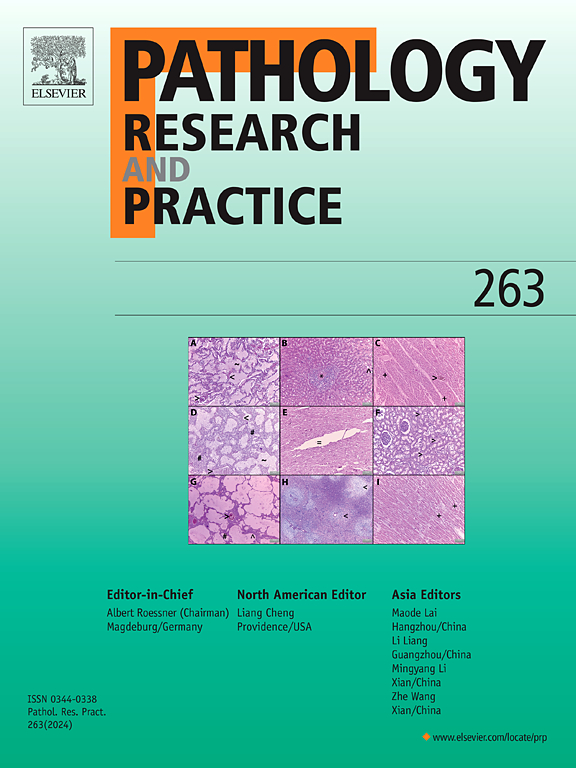Non-coding RNAs in Cancer: Mechanistic insights and therapeutic implications
IF 2.9
4区 医学
Q2 PATHOLOGY
引用次数: 0
Abstract
Non-coding RNAs have gathered significant attention for their unique roles in biological regulation. Across a broad spectrum of developmental processes and diseases, particularly in human malignancies, ncRNAs play pivotal roles in regulatory mechanisms. MicroRNAs, long noncoding RNAs, and small nucleolar RNAs stand out among the diverse forms of ncRNAs that have been implicated in cancer. MiRNAs, classified as short non-coding RNAs, modulate gene expression by binding to messenger RNA molecules, thereby inhibiting their translation. Altered miRNA expression has been associated with the onset and progression of various malignancies, including lung, breast, and prostate cancer. In contrast, lncRNAs, characterized as longer ncRNAs, exert control over gene expression through various mechanisms, such as chromatin remodelling and gene silencing. This review offers a comprehensive examination of the numerous ncRNAs that have emerged as crucial regulators of gene expression, playing implicated roles in the initiation and progression of diverse cancers.
非编码rna在癌症中的作用:机制和治疗意义。
非编码rna因其在生物调控中的独特作用而受到广泛关注。在广泛的发育过程和疾病中,特别是在人类恶性肿瘤中,ncrna在调节机制中起着关键作用。microrna、长链非编码rna和小核仁rna在与癌症有关的各种形式的ncrna中脱颖而出。mirna被归类为短链非编码RNA,通过结合信使RNA分子来调节基因表达,从而抑制其翻译。miRNA表达的改变与各种恶性肿瘤的发生和发展有关,包括肺癌、乳腺癌和前列腺癌。相比之下,lncRNAs以较长的ncRNAs为特征,通过染色质重塑和基因沉默等多种机制控制基因表达。这篇综述提供了对众多ncrna的全面研究,这些ncrna已成为基因表达的关键调节因子,在各种癌症的发生和发展中发挥着重要作用。
本文章由计算机程序翻译,如有差异,请以英文原文为准。
求助全文
约1分钟内获得全文
求助全文
来源期刊
CiteScore
5.00
自引率
3.60%
发文量
405
审稿时长
24 days
期刊介绍:
Pathology, Research and Practice provides accessible coverage of the most recent developments across the entire field of pathology: Reviews focus on recent progress in pathology, while Comments look at interesting current problems and at hypotheses for future developments in pathology. Original Papers present novel findings on all aspects of general, anatomic and molecular pathology. Rapid Communications inform readers on preliminary findings that may be relevant for further studies and need to be communicated quickly. Teaching Cases look at new aspects or special diagnostic problems of diseases and at case reports relevant for the pathologist''s practice.

 求助内容:
求助内容: 应助结果提醒方式:
应助结果提醒方式:


